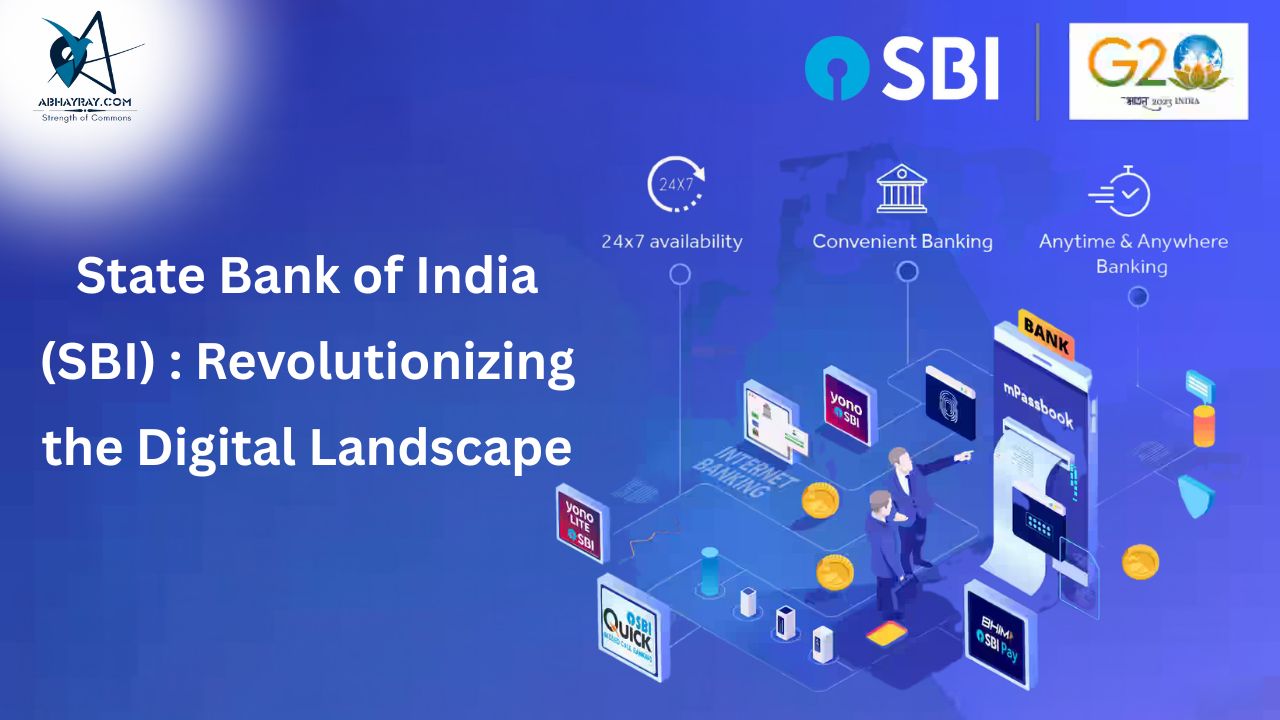Introduction
The State Bank of India (SBI) is one of the largest and most influential financial institutions in India, known for its long-standing history and broad range of services. Headquartered in Mumbai, SBI caters to a diverse customer base, including individuals, businesses, government bodies, and corporate giants. It stands as a pillar of India’s financial ecosystem, boasting significant market capitalization and playing a crucial role in the country’s banking sector.
The Legacy of SBI
SBI traces its origins to the Imperial Bank of India, which was created in 1806 through the amalgamation of three major banks the Bank of Calcutta, the Bank of Madras, and the Bank of Bombay. However, it was in 1955 that the Imperial Bank of India was renamed the State Bank of India, following its acquisition by the Government of India, with the Reserve Bank of India (RBI) holding a 60% stake. In 2008, the government took full control, cementing SBI’s role as a key player in the country’s financial landscape. Over the years, the bank has shown consistent growth and resilience, becoming a dominant force in the Indian banking industry.
Today, SBI stands as one of the largest banks in India in terms of both market capitalization and the size of its operations. The bank operates more than 24,000 branches and over 59,000 ATMs, serving over 42 crore customers. Additionally, SBI has a global footprint with offices spread across 36 countries, highlighting its international reach and influence.
Comprehensive Banking Services
SBI’s extensive range of services includes everything from personal banking to corporate finance. Among the bank’s offerings are various loan products, including home loans, personal loans, car loans, and education loans, designed to meet the needs of individuals across different income groups. The bank also provides debit and credit cards, travel cards, health and vehicle insurance, wealth management, and demat accounts. Furthermore, SBI has introduced customized savings products to cater to various customer segments, from children to the elderly. In addition to these traditional services, SBI has also expanded its portfolio to include online and mobile banking solutions, including internet banking, e-payments, and digital transaction services. These efforts reflect the bank’s commitment to providing accessible, on-the-go banking solutions that meet the evolving needs of its tech-savvy customer base.
The Digital Transformation of SBI
SBI’s journey towards digital transformation has been nothing short of remarkable. Over the past few years, the bank has made significant strides in embracing new technologies to enhance its offerings and improve customer experience. Finance Minister Nirmala Sitharaman, during her speech at SBI’s Platinum Jubilee celebrations, highlighted the bank’s ongoing efforts in digitizing its services. She noted how SBI has effectively integrated technology to streamline customer journeys, offering innovative products and services that cater to the changing demands of consumers. With a growing number of tech-savvy customers, SBI’s efforts to innovate have positioned the bank at the forefront of the digital banking revolution in India.
SBI has focused on leveraging digital tools to improve efficiency and simplify banking processes. The bank has invested in advanced statistical tools to engage customers continuously and deliver personalized experiences. It has also streamlined its operations by launching mobile apps, online platforms, and enhanced payment services that align with India’s broader push for financial inclusion under the Digital India Initiative.
A New Era of Financial Inclusion
SBI’s role in advancing financial inclusion and supporting rural empowerment is another aspect of its success. The bank has always been committed to making banking accessible to underserved and marginalized sections of society. In line with this vision, SBI has been instrumental in bringing banking services to remote regions and rural areas, which were traditionally excluded from the formal financial system.
SBI has also expanded its portfolio to include initiatives that address the needs of women, small businesses, and marginalized groups. For example, the bank launched 501 women customer service centers to empower female customers and provide them with tailored financial services. These initiatives reflect the bank’s deep commitment to fostering inclusive growth and ensuring that all Indians have access to quality financial services.
The Rise of Digital Payments and Fintech in India
India’s digital payments sector has experienced explosive growth in recent years, with platforms like the Unified Payments Interface (UPI) playing a central role in transforming the way transactions are conducted. SBI has embraced this trend, integrating UPI into its payment systems to make it easier for customers to conduct transactions digitally. The approval of WhatsApp to provide payment services further boosts the role of UPI, with the potential to reach millions of consumers.
Additionally, SBI is increasingly involved in the integration of digital currencies, such as the digital rupee, into the banking ecosystem. The Reserve Bank of India’s (RBI) introduction of the Central Bank Digital Currency (CBDC) has led to the launch of UPI-enabled digital rupee apps, which simplify payments for both consumers and merchants. SBI, along with other banks like Canara Bank, has supported the adoption of digital currencies, positioning itself as a leader in the digital payment revolution.
Project Financing and New-Age Industries
SBI’s future-focused approach is reflected in its recent initiative to establish a dedicated unit for project financing in emerging sectors like artificial intelligence (AI), e-commerce, and fintech. This new unit, named the “Center of Excellence for Project Financing,” will cater to the growing demand for financing in new-age industries. SBI’s commitment to these sectors demonstrates its forward-thinking approach to growth and innovation.
The bank is also expanding its focus on renewable energy and other emerging industries, aligning itself with India’s vision of modernizing its infrastructure and fostering sustainable economic growth. By supporting these sectors, SBI aims to drive innovation and help shape the future of India’s economy.
Conclusion
State Bank of India’s legacy, combined with its embrace of digital transformation and financial inclusion, positions it as a leader in the Indian banking sector. As the bank continues to innovate and adapt to changing customer needs and technological advancements, it is poised to play a key role in shaping the future of India’s financial landscape. With a focus on emerging industries, digital payments, and inclusive growth, SBI is well-equipped to navigate the challenges and opportunities of the rapidly evolving banking world.
GMICapitals.com RaysVeda.com GetMyStartup.com LawCanal.com GetMyIndia.com ZinCob.com Angeltors.com

